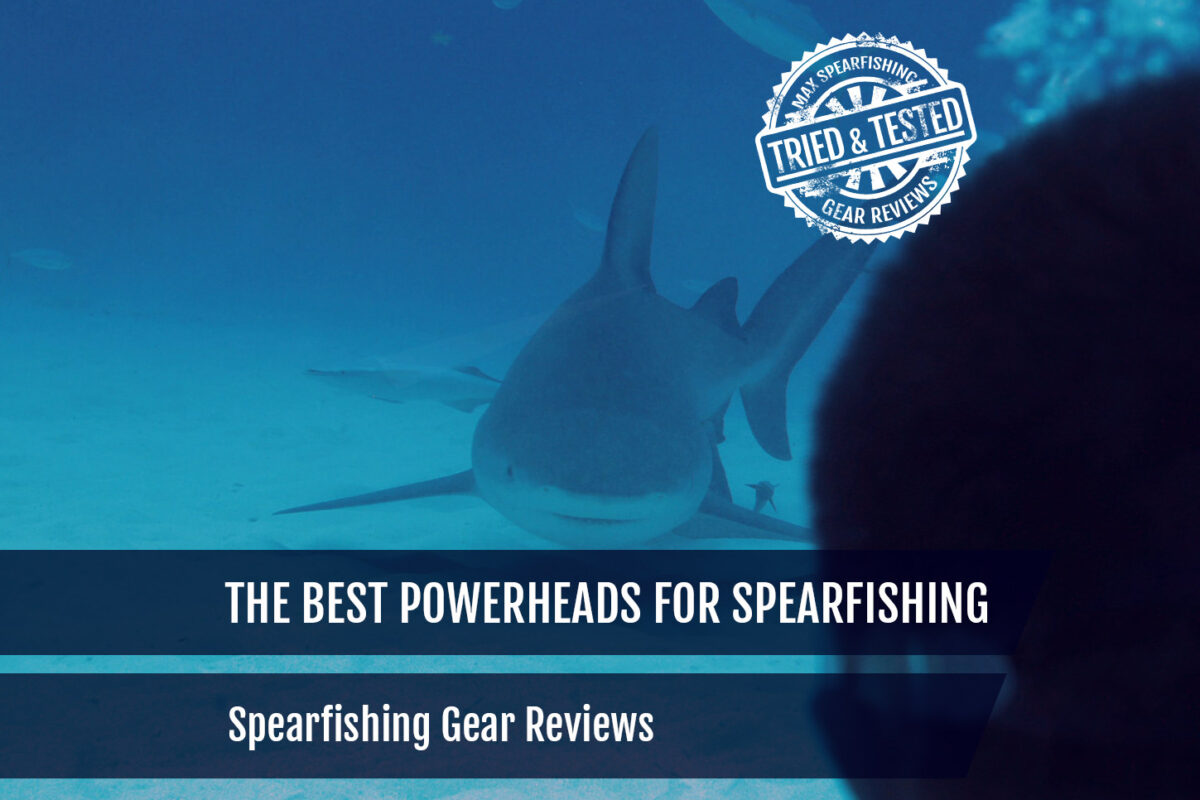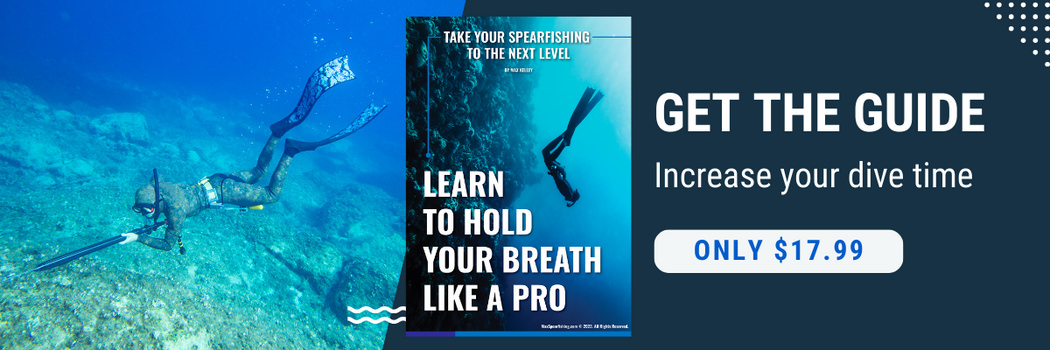No products in the cart.
Powerheads
The Best Powerheads for Spearfishing
If you ask about the best powerheads for spearfishing, you will likely get some very different answers.
Because spearfishing with a powerhead is a topic the spearfishing community is incredibly divided on. Some say it’s unfair, as your target catch never stands a chance, and I tend to agree. I’d never recommend powerhead spearfishing to take down a fish or a shark, but powerheads are vital when you’re in the water.
Powerheads are your best protection when spearfishing. Underwater, you’re no longer on top of the food chain. Testing all of these in Australia was a challenge, as you need strict licenses to spearfishing with a powerhead. Still, my recommendation is Beco’s .357 Quickload Powerhead.
It’s stainless steel and easily threads onto a standard 6mm shaft. Click here to get yours now.
Max Spearfishing is reader-supported. We may earn a small commission for purchases using our links. Click here to learn more.
The Best Powerheads for Spearfishing
For me, I view powerheads as a necessary evil. But also as only personal protection device. Since I started diving in deep water, chasing bigger and bigger fish, I’ve been putting myself at risk. We’re hunting the same food source as some of the biggest predators in the ocean when you’re spearfishing, and eventually, you will come across a shark.
What happens next could change your life in an instant. Unless you’ve got a way to fight back. That’s where powerheads come in.
Beco .357 Quickload Powerhead
Editor’s Choice: Best Powerheads for Spearfishing
The stainless steel powerhead will handle .38 and .357 calibers and screws onto an existing 6mm shaft. At 8oz, it’s not a big piece of gear, and it’s straightforward to use. Load the shaft in your speargun, and if anything gets too close, you fire.
My only recommendation is to add a layer of fingernail polish around the primer and where to bullet presses into the casing to better seal off the cartridge from the water and keep your ammo from flooding.
No products found.
AB Biller .357 Powerhead
Shortlist: Best Powerheads for Spearfishing
Another option for a spearfishing powerhead is the precision-designed stainless steel model from AB Biller.
It can fit your .357 calibre ammunition and is one of the most reliable options. I like that it’s a bang stick instead of a pure powerhead, so you take the entire thing in the water.
However, it does screw on and off to a 6mm thread in case you want to assemble it on another shaft.
No products found.
Bill’s Bang Sticks 38 Special .357 Magnum Ultralite Powerhead
Shortlist: Best Powerheads for Spearfishing
Now we previously ordered these over Amazon, but they’ve since discontinued that shopping channel, so you’ll have to buy these directly by clicking here.
Marketed as one of their most popular units, this offers a hairpin safety and easily screws onto a 6mm threaded shaft. You can mount it on a speargun shaft or even a Hawaiian Sling if it’s got the right thread for the tip. But what I like is they offer variations for other thread sizes (at no extra cost), so you can get the right powerhead for your shafts.
Click here to see the different options available.
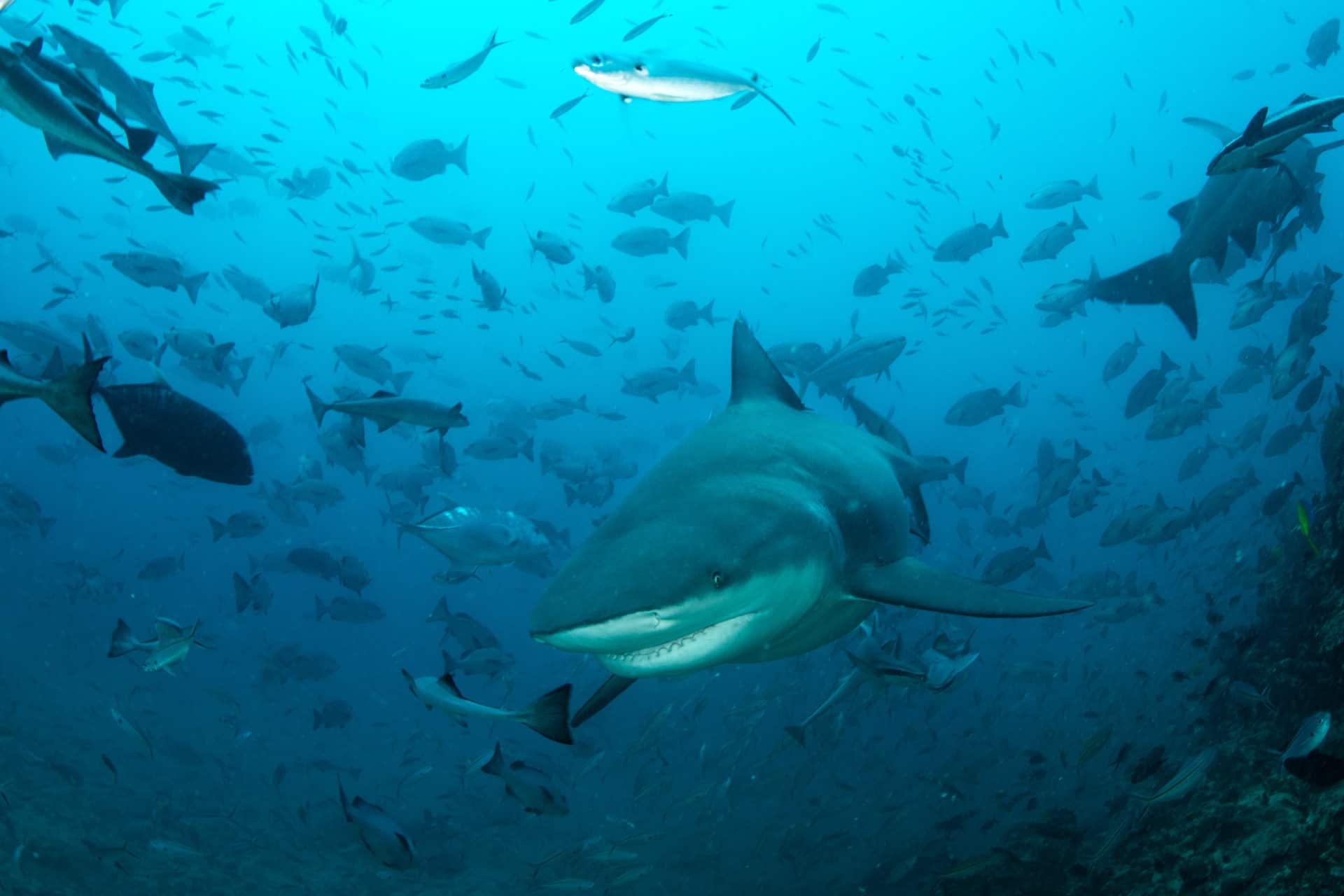
What is powerhead spearfishing?
Powerheads are a particular type of firearm that works underwater. Developed initially for shark and alligator hunting, they serve as a place for spearfishing, especially for sizeable bluewater fish. In addition, you can use them to dispatch a prize fish, like a marlin, before wrestling them into your boat.
A powerhead is a relatively simple piece of spearfishing equipment. Just an attachment that fits onto the end of a spear, usually a long metal chamber that enables you to slip a round of ammunition inside. Once armed and loaded, you’ve effectively turned your speargun into an underwater gun. One that packs enough power to take down pretty much anything you’ll come across in the ocean.
Because of this, many laws surround the use of powerheads while spearfishing and some essential safety precautions you must follow.
What are the different types of powerheads?
Depending on the calibre you’re after, there are options for powerheads that fit a variety of different-sized ammunition. For example, powerheads generally fit standard handgun ammunition, like the .357 Magnum or the .44 Magnum, but you can get larger options to fit up to a 12-gauge shotgun shell.
Personally, I think a .357 Magnum is more than enough blast to deter whatever it is that’s hassling you; after seeing both in action, the bigger powerheads are definitely overkill.
How does a spearfishing powerhead work?
The casing enclosing the round of ammunition allows the powerhead to function like a typical firearm.
A safety pin needs to be released before the round is armed, and once you take your shot, the shaft acts as the firing hammer, triggering the round once it hits a target. In addition to the blast impact from the round, the bullet will travel up to a meter underwater, which damages your intended target the most.
Oh, and you’re probably going to want to add a little nail polish to the seal of the ammunition you’re using. Ammunition is not 100 per cent watertight, and if any moisture gets in – it will not fire. So cover the primer and case edge with it, and if you’ve not had to discharge the round during a dive, it’s best to safely discard it.
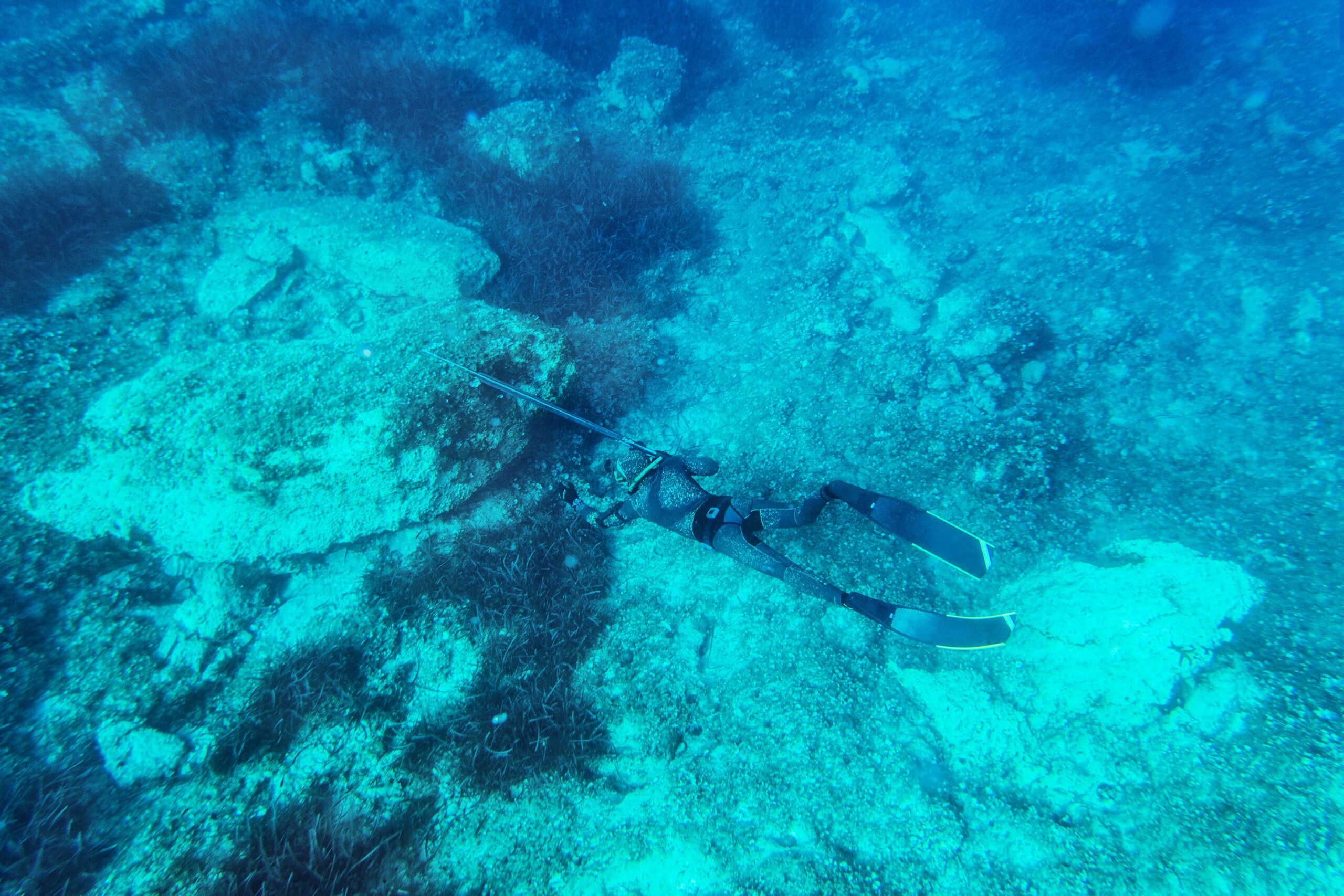
Is a “Bang Stick” the same thing?
There’s also a slightly different type of powerhead known as a bang stick. Basically, a simple barrel that contains the cartridge. Depending on the size of the bang stick, you can fit everything from a small calibre .22 to a large rifle cartridge and even a 12 gauge shotgun shell.
The cartridge slides into place inside the barrel, though with room to move, and at one end, along with a firing pin.
The tip of your cartridge will extend out to the end of the firing side, usually a centimetre or so. The safety here is a cotter pin inserted crosswise to stop the cartridge from sliding back and hitting the firing pin. To arm your bang stick, remove the cotter pin, and shoot your bang stick, much like you would a pole spear.
When it hits your intended prey, the cartridge is pushed back inside the barrel so that it makes contact with the firing pin. This ignites the cartridge and sends the bullet straight into the prey. It’s straightforward, very effective, and operates in a similar way to a powerhead, but not quite.
Laws on powerhead spearfishing
Here in Australia, powerheads are a Category A firearm, and you need a legitimate reason to get a permit. This means you need to be doing an activity (like spearfishing) where there’s a good chance you’ll need shark protection.
In the United States, generally, powerheads are considered firearms if they are not permanently attached to a speargun’s shaft. Therefore, at a federal level, they are fine to use.
However, many states have restrictions, so it’ll pay to know where you’re going spearfishing and what permits (if any) you need in your state.
How to use a powerhead
I’ve tried both the bang stick versions and those that attach to a speargun shaft, and I’d recommend fitting a powerhead to your speargun. It allows for a little more range, as you want to be as far away from your target as possible when powerhead spearfishing.
Here’s how my setup works.
This is primarily for deep-water spearfishing when we’re jumping into schools of kingfish in the wide-open ocean. Usually, I don’t carry powerhead spearfishing when I’m just kicking around the reef, as it’s a dangerous piece of spearfishing gear that I’d prefer not to worry about unless absolutely necessary.
What I use is a dedicated powerhead speargun.
It’s got a powerhead permanently attached to the shaft and is loaded and ready to go at all times – though with the safety ON. It’s not one of our big blue water spearguns that has this setup, just an older speargun I had back at home that I use specifically as a means of protection when we’re blue water spearfishing.
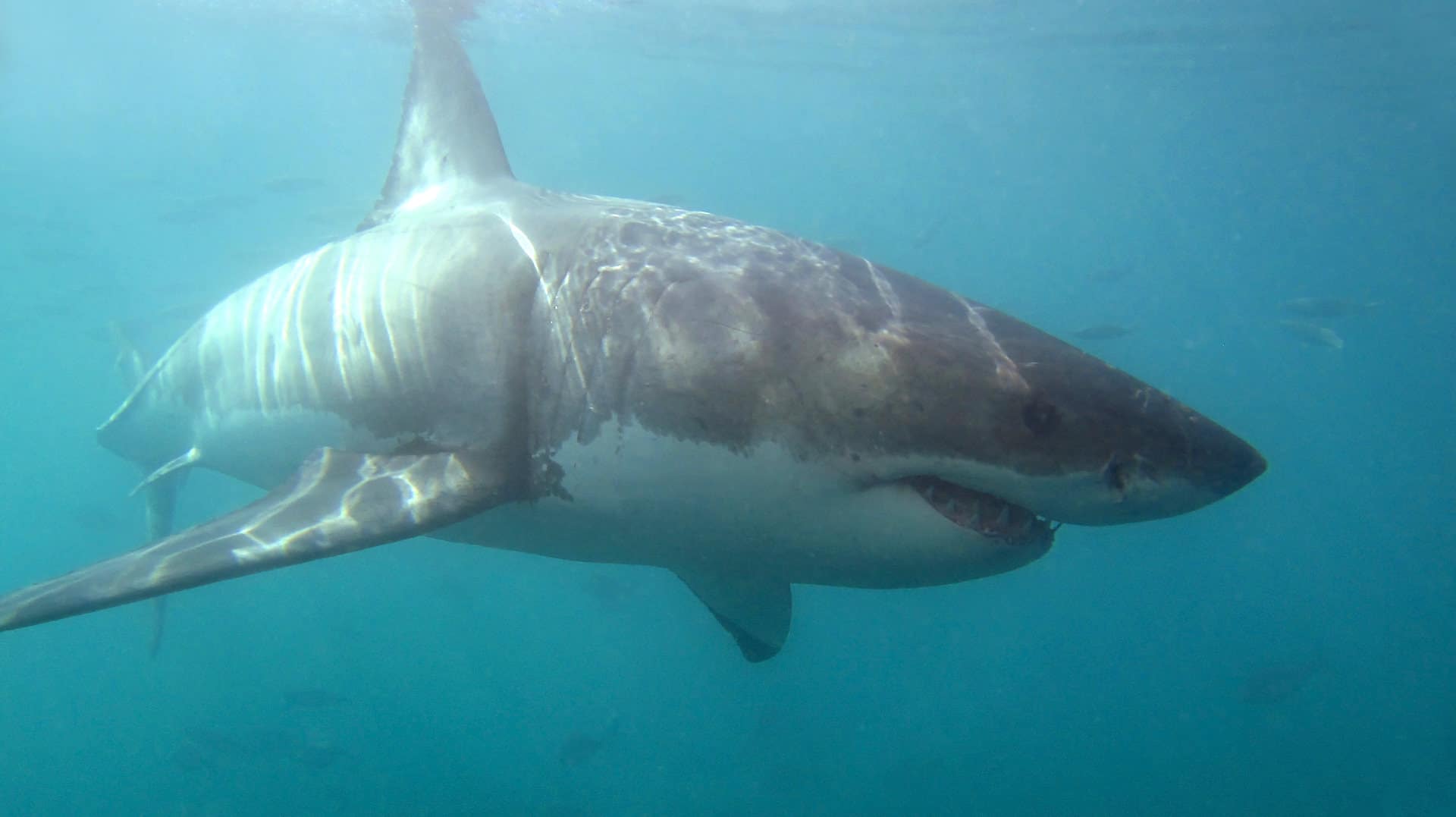
The reason I have it permanently set up is twofold. First, I don’t want to be screwing around with an underwater gun, screwing tips on and off, trying to get my powerhead ready to go when you need it. It’s not safe doing it like this, and it takes too much time. Better to have it set up and ready to go as soon as you flick the safety off.
But I don’t carry the powerhead with me. This speargun becomes the responsibility of my buddy (who is at the surface watching me dive), and vice versa when he is spearfishing. I take the powerhead enabled speargun and keep an eye on him.
To take a shot, you need to pull the safety pin (this is what stops the ammunition from accidentally firing while you’re bumping around in the water), and you take your shot. The momentum from the shaft hitting a target will act as a hammer on the firing pin, and the bullet will fire.
Both the blast radius and the actual bullet will do damage. But be prepared to get the hell out of the water. The sound and the blood will likely draw more sharks to see what all the fuss is about.
The ethics of powerhead spearfishing
I’m a big fan of sharks. But I’ve lost fish to aggressive bull sharks, and I know how dangerous sharks can be in the water. Sharks hunt, kill and are far more agile and quick than you could ever hope to be.
But I’m proud to say I’ve never been in a situation requiring me to shoot and kill a shark.
Despite a lifetime of spearfishing, I’ve yet to have a shark try to attack me. But, of course, I usually dive with stringers and float lines to keep our catch as far away from myself as possible, and whilst a few sharks have come in for a look or to swipe a quick fish, most will keep their distance from me – which is a good thing.
My rule is never to injure a shark unless you’ve got no other choice, and it needs to be an absolute last resort. I did an open-water shark dive in Fiji a few months back and saw just how effective a good prod in the nose can be at “pushing” even big bull sharks away. But, of course, you don’t need to shoot every shark you see; that’s just not right. And I wouldn’t use a powerhead to catch fish either, but that’s just me.
If your game is big pelagic fish like marlin, a bang stick will be handy before you wrestle them into your boat.
Is there a more ethical shark deterrent?
Now, the shark shield is an incredible piece of technology, that has been scientifically proven to stop sharks in their tracks.
Government approved and used by both the Australian and U.S. Navies, it’s an electronic device that generates an electric field in the water. Creating a safe space around yourself, that disrupts the electronic receptors sharks use to hunt their food. When they get close to you and enter this field, these receptors activate and spasm.
It’s unbearable to sharks, and their immediate response is to turn and swim away. So instead of having to take the offensive, with a powerhead that will do lethal damage to any shark who gets too close. There are other, more humane options you can use, in order to stay safe while you’re spearfishing.
No products found.
So should I start spearfishing with powerheads?
Powerhead spearfishing is a controversial topic.
Despite being legal in many places, I believe you don’t need a powerhead to shoot and catch fish. It’s a little unsportsmanlike, and you’ll also do far more damage than you need (a well-placed shot from a normal speargun will allow you to take down even the most massive fish).
But powerheads do have a place when you’re spearfishing. As your last line of defence, just in case.
And I’d highly recommend having one for protection.
Happy spearing!

